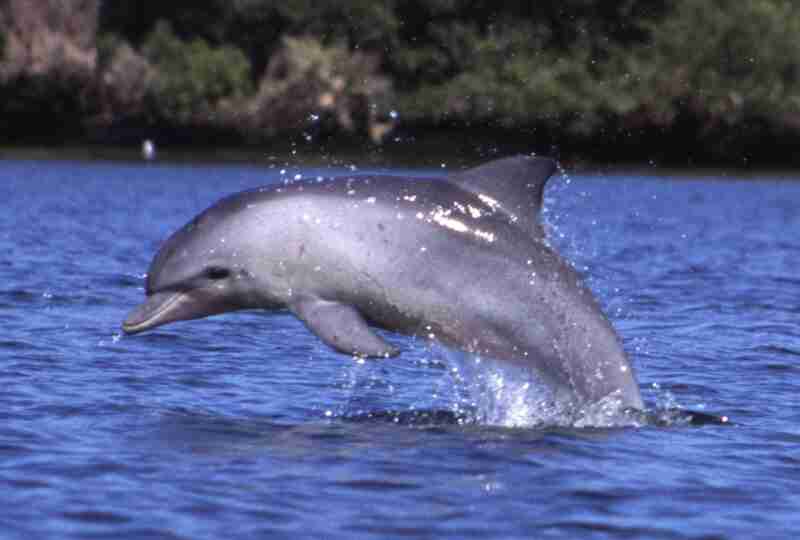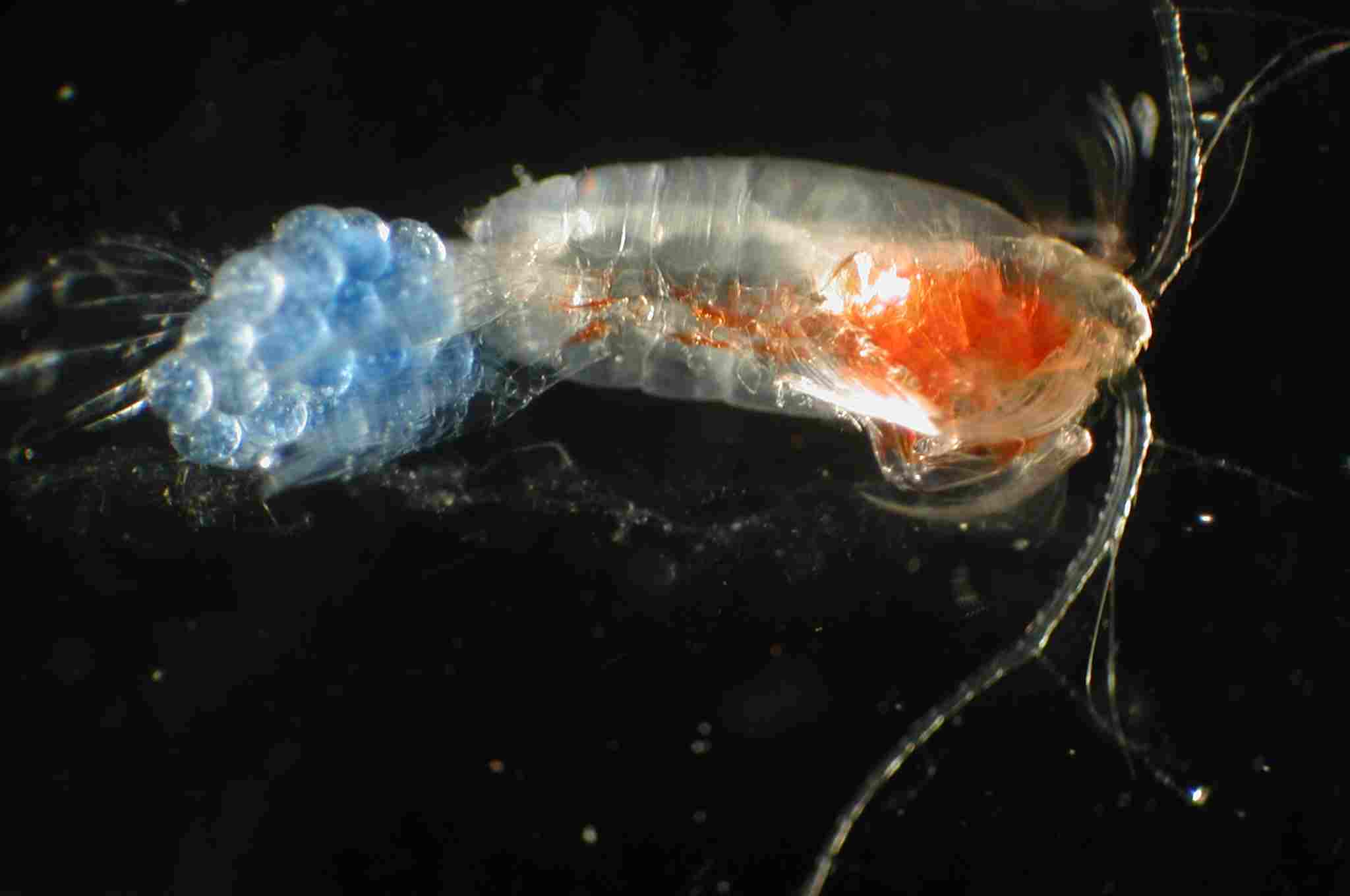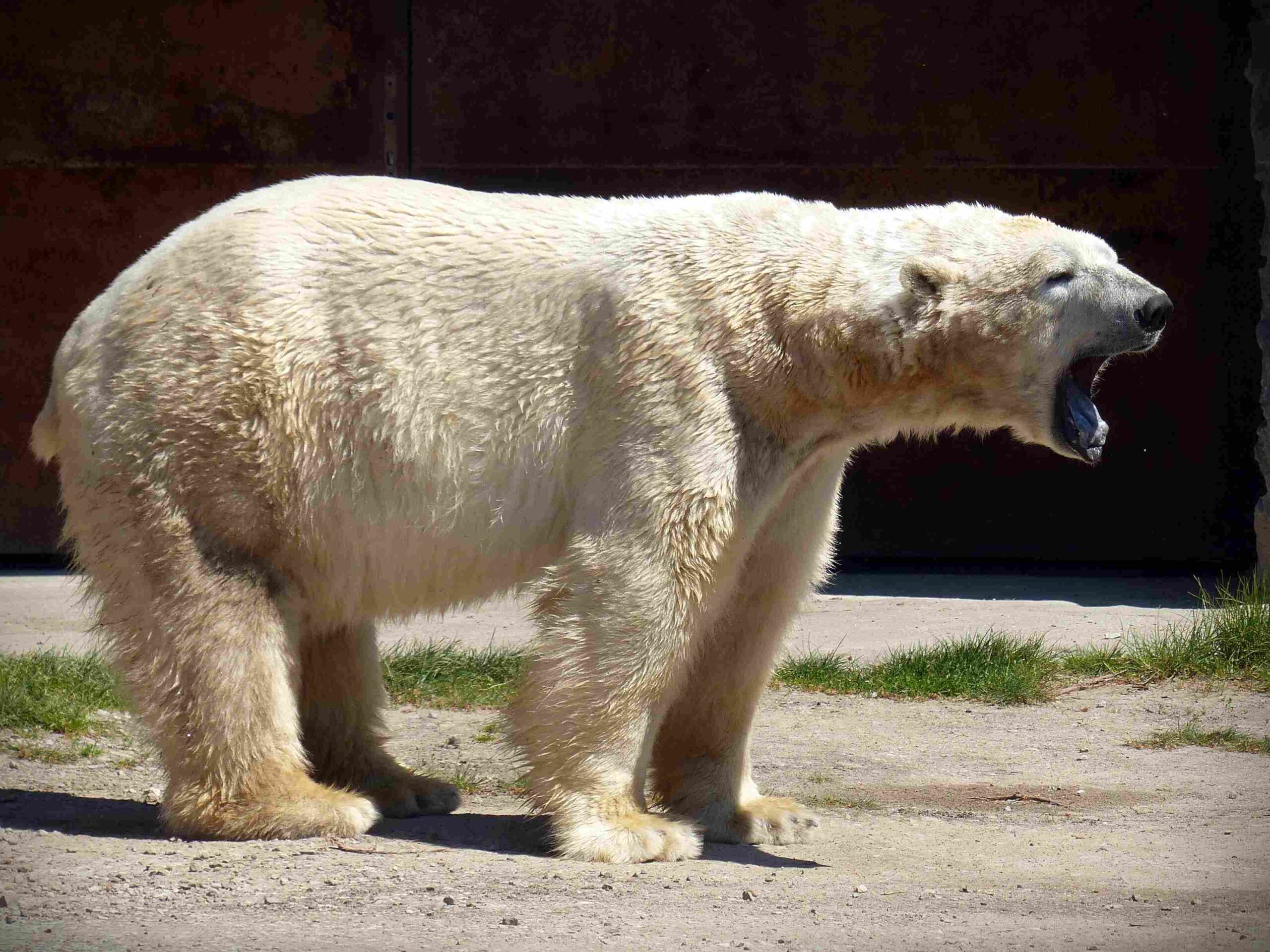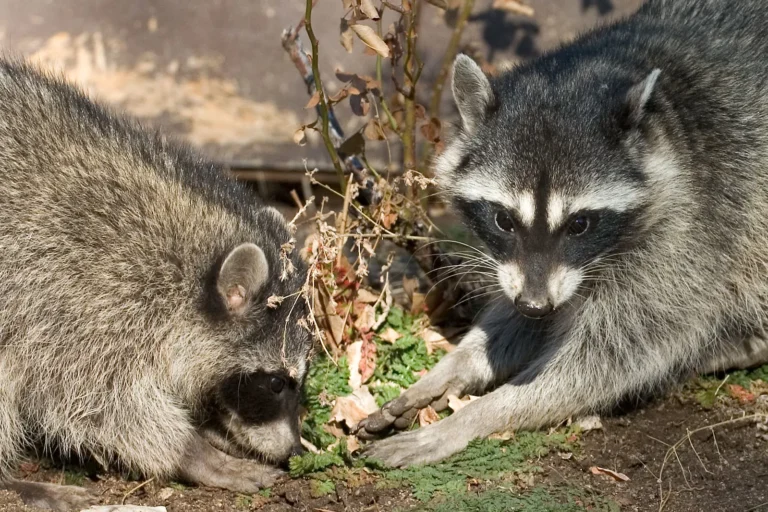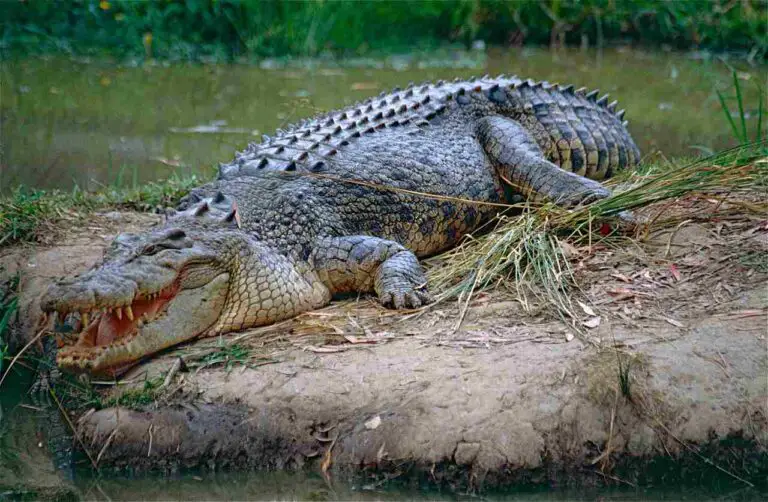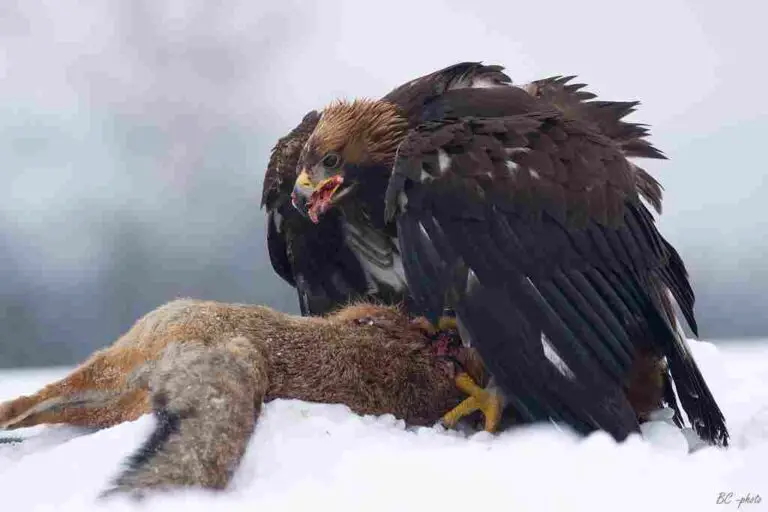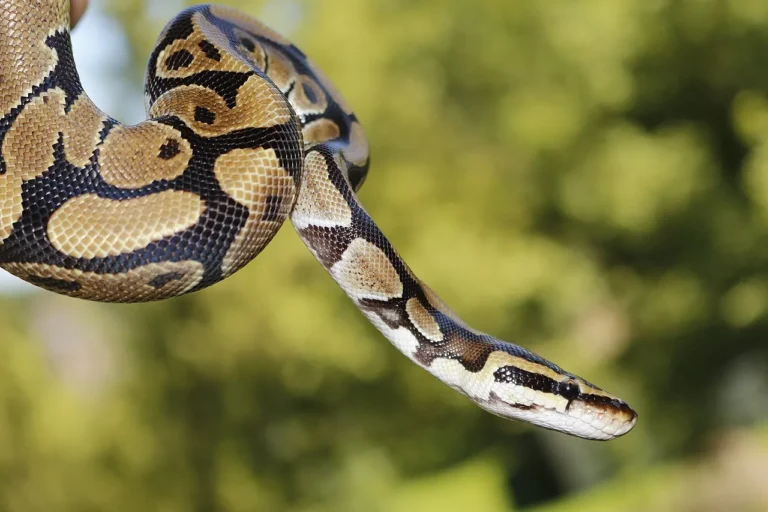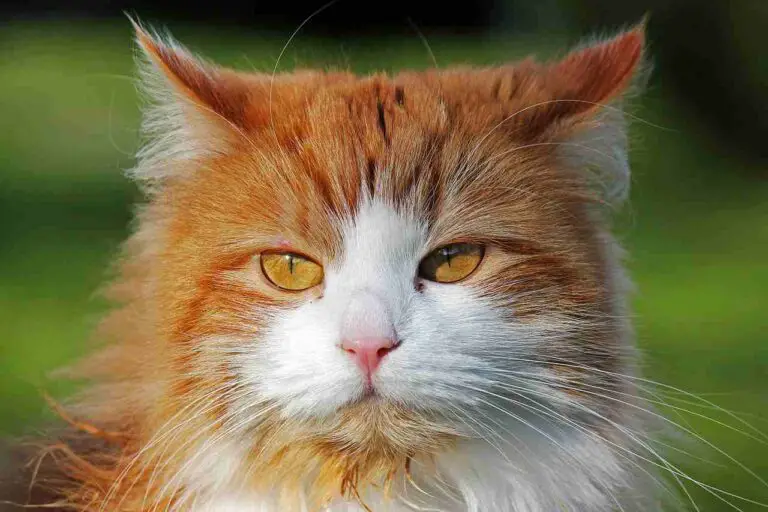Food Web of The Ocean based on Trophic Interconnections Explained
Food web of the ocean comprises of producers and consumers from multiple linear sequences, that function collaboratively to establish a continuous loop of energy transfer.
This article discusses the food web of the ocean, based on feasible trophic interconnections between organisms in various ocean food chains and trophic levels, as follows;
1). Marine Food Chain 1 (as a component, of the Food Web of the Ocean)
Trophic Level 1: Phytoplankton, seagrasses
Trophic Level 2: Sea turtle, zooplankton, herbivorous fish
Trophic Level 3: Small predatory fish, sea lion, marlin
Trophic Level 4: Dolphin, large tuna
Trophic Level 5: polar bear, great white shark
The marine food chain 1 comprises of five (5) trophic levels; each of which signifies a step in the sequence of energy-transfer, from producers at the bottom to apex consumers at the top.
Trophic Level 1: Producers in the Food Web of the Ocean (from Chain 1)
Phytoplankton and seagrasses are the two producers in this food chain. Each of them is discussed briefly below;
*Phytoplankton as a Producer in the Food Web of the Ocean
Phytoplankton are a group of free-floating, microscopic algae that occur in the upper region of the ocean.
Carbon dioxide, water and solar radiation (in the form of visible light) are used by phytoplankton to produce biomass and oxygen, through the process of photosynthesis.
Based on this (photosynthetic) capability, phytoplankton function as primary producers in the ocean, that supply bioenergy to be used by other organisms. They can be described as basal organisms that constitute the foundation of the food web.
*Seagrasses as Producers in the Ocean Food Web
Seagrasses can be described as angiosperms that typically occur in coastal marine zones [9].
They find anchorage in coastal sediments and substrata, and perform multiple functions including;
1. Oxygen production
2. Creation of micro-habitat
3. Food provision for marine herbivores

In addition, seagrasses have some adaptations like efficient gas-exchange capacity and flexible leaves, which enable them thrive in their habitat.
Trophic Level 2: Primary Consumers in the Food Web of the Ocean (from Chain 1)
Primary consumers in marine food chain 1, which is a linear assemblage of organisms that make-up the ocean food web, are; sea turtle, zooplankton and herbivorous fish.
*Sea Turtle as a Primary Consumer in the Food Web of the Ocean
A sea turtle is an omnivorous reptile whose food is largely composed of plant matter, including algae and seagrasses.
Adaptations of this organism for its ecological role include the possession of beak-like mouth, specialized jaws and digestive tract for effective mastication and digestion of marine vegetation.
Through its feeding activities, the sea turtle contributes to the dynamics of seed dispersal and marine plant-speciation, as well as growth-regulation of algae within its environment.
*Zooplankton as a Primary Consumer in the Food Web of the Ocean
Zooplankton are tiny aquatic animals like krill, insect larvae, and copepods that occur in the water column as drifters or free-floaters [14].
They are classified as primary consumers for feeding directly on producers like phytoplankton. Zooplankton also constitute an important food source for several oceanic organisms, from small fish to large baleen whales.
*Herbivorous Fish as Primary Consumers in the Ocean Food Web
Herbivorous fish that may be found in the ocean include; rabbitfish, parrotfish and surgeonfish.
These fish play an important role in the marine food chain/web by actively consuming producers like seagrasses and macroalgae.
Adaptations of herbivorous fish for their role include specialized jaws, dentition and digestive mechanisms.

Trophic Level 3: Secondary Consumers in the Food Web of the Ocean (from Chain 1)
Secondary consumers in the ocean are organisms that rely on primary consumers/herbivores within their territory or environment, as a major source of food and nutrients.
In chain 1, the secondary consumers are; small predatory fish, sea lion, and marlin
*Small Predatory Fish as a Marine Secondary Consumer
Snapper and grouper are two examples of small predatory fish that function as secondary consumers in the ocean.
These organisms feed on primary consumers, including zooplanktonic invertebrates like krill and copepods, among other prey.
Their adaptations include sharp teeth and streamlined bodies.
*Sea Lion as a Secondary Consumer in the Food Web of the Ocean
Sea lions can be described as carnivorous mammals that inhabit marine regions, and prey upon squids and fish.
In order to function effectively in their ecologic role, these animals have sharp teeth, specialized flipper-limbs, and excellent swimming capability [4].
*Marlin as a Marine Secondary Consumer
The marlin is a well-known predatory fish that preys on squids, crustaceans and smaller fish.
Features of this organism include a bill-shaped snout for stunning and injuring prey [8], as well as an elongate body for efficient navigation.

Trophic Level 4: Tertiary Consumers in the Food Web of the Ocean (from Chain 1)
Tertiary consumers in food chain 1 are; dolphin and large tuna.
*Dolphin as a Marine Tertiary Consumer
Dolphins are marine mammals that are social and adaptable.
They come smaller marine organisms including mollusks, crustaceans and fish.
Adaptive features of dolphins for their ecologic roles include; sharp teeth, strong jaws and streamlined body.
*Large Tuna
The adjective 'large' is used to describe tuna in this food chain (tunas are generally likely to grow large compared to other fish) in order to emphasize the importance of size as a biological advantage for fishes that are classified as tertiary consumers.
Species of tuna known for their size include bluefin tuna and yellowfin tuna respectively.
In many cases, these fish are apex predators within their territory.
Characteristics of tunas include migratory behavior and rapid navigation. They are known to consumer smaller marine organisms.
Trophic Level 5: Quaternary Consumers in the Food Web of the Ocean (from Chain 1)
The two quaternary consumers in marine food chain 1 are; polar bear and great white shark.
*Polar Bear as a Quaternary Consumer in the Oceanic Food Web
Polar bear is an iconic predator in coastal zones, especially in ecotone areas where the marine ecosystem meets the tundra.
The diet of polar bears is dominated by seals [2]. They may also consume fish, and may scavenge on carrion.
Adaptations of the polar bear for its environment and feeding habit include possession of sharp teeth, strong jaws, thick fur, fat/blubber layer for insulation, and swimming capability.
*Great White Shark
The great white shark is a marine apex predator that feeds on fish and marine mammals like seals, among others.
Great white sharks influence the distribution and equilibrium of marine biomes.
2). Marine Food Chain 2 (as a component of the Food Web of the Ocean)
Trophic Level 1: Macroalgae, phytoplankton, mangrove plants
Trophic Level 2: Herbivorous fish, zooplankton, herbivorous gastropods, manatee
Trophic Level 3: Small sharks, tuna, squid
Trophic Level 4: Large dolphins, exceptionally-large tuna
Trophic Level 5: Blue whale, Pacific kingfisher
This marine food chain contributes to the formation of the food web of the ocean, by containing organisms that relate trophically with other organisms in other food chains within the ecosystem.
Trophic Level 1: Producers in the Food Web of the Ocean (from Chain 2)
Producers in food chain 2 are; macroalgae, phytoplankton, and mangrove plants. Each of them is briefly discussed below;
*Macroalgae as a Primary Consumer in the Food Web of the Ocean
Macroalgae, also often referred to as seaweeds [11], are a group of large algae that grow in aquatic ecosystems.
They are primary producers that perform photosynthesis, and serve as sources of oxygen, food and micro-habitat for several marine animals.
*Phytoplankton
Like seaweeds, phytoplankton are autotrophs that produce biomass through photosynthesis; using electromagnetic waves from the Sun as a major raw material.
Unlike seaweeds, they have microscopic dimensions and can be alternatively referred to as microalgae. Roles played by phytoplankton in the oceanic food web are; food and nutrient-provision.
*Mangrove Plants as Producers in the Food Web of the Ocean
Mangrove plants are a group of salt-tolerant shrubs and trees that can be found in brackish wetlands, coasts, and shallow parts of oceans.
They may grow into dense forests [1], and are known for their role in shoreline-stabilization, erosion mitigation, water filtration, and habitat creation within the marine or brackish environment.
Adaptive features of mangrove plants include specialized roots for anchorage and gas-exchange in waterlogged sediments.

Trophic Level 2: Primary Consumers in the Food Web of the Ocean (from Chain 2)
Primary consumers in chain 2 of the ocean are; herbivorous fish, zooplankton, herbivorous gastropods, and manatee.
*Herbivorous Fish as Primary Consumers in the Oceanic Food Web
Herbivorous fish like surgeonfish and parrotfish, consume phytoplankton, macroalgae, and some mangrove plant-parts.
These fish have adaptive features like specialized jaws and teeth that enable them graze on vegetation.
*Zooplankton
Crustaceans and aquatic larvae are examples of zooplankton in the marine food chain.
These organisms are heterotrophic and consume autotrophs like phytoplankton.
In turn, organisms in higher trophic levels of the food chain, can consume zooplankton as part of their diet.
*Herbivorous Gastropods as Marine Primary Consumers
Herbivorous gastropods include limpets (marine snails) that feed on vegetative matter in their habitat [12].
Features of herbivorous gastropods that aid them in their ecological role include; radular oral structures for scraping algal material from rock surfaces [6].

*Manatee as a Primary Consumer in the Ocean
Alternatively called 'sea cow', the manatee is a large herbivorous mammal that inhabits marine environments.
They posses specialized dentition and digestive tracts for their diet, which comprises of marine plants like seagrases.
Trophic Level 3: Secondary Consumers in the Food Web of the Ocean (from Chain 2)
Secondary consumers in marine food chain 3 are; small sharks, tuna, and squid.
*Small Sharks as Marine Secondary Consumers
Small sharks include catshark and reef shark; which are predatory fishes that consume other marine animals like herbivorous small fish, and zooplankton.
Such sharks are also capable of preying on mammals like the manatee. The only reason why this rarely occurs is due to the geographic differences in distribution of both organisms; with manatees being largely restricted to shallow waters.
Features of small sharks include keen sensory capability, streamlined morphology, and sharp teeth.

*Tuna as a Secondary Consumer in the Food Web of the Ocean
Skipjack and yellowfin are two species of tuna that can be considered secondary consumers in the ocean.
They have a high metabolic rate compared to other fish, and can swim rapidly; a trait that aids in the capture of prey.
*Squid as a Secondary Consumer in the Ocean
Squid are cephalopod mollusks [16], that may be found in multiple trophic levels of the marine food chain/energy pyramid.
They have notable predatory capabilities, and can consume small fish, and zooplankton like crustaceans.
Adaptive features of the squid that help with prey capture and consumption include sharp beaks, and sucker-equipped tentacles [13].
Trophic Level 4: Tertiary Consumers in the Food Web of the Ocean (from Chain 2)
Large dolphins, and exceptionally-large tuna are tertiary consumers in food chain 2.
*Large Dolphins as Tertiary Consumers in the Ocean
Large dolphins like the bottlenose specie, are formidable marine predators.
They are social and adaptive, often functioning as apex consumers within their territory.
Food for these organisms comprises of zooplankton, fish, and other marine mammals.
They are sensitive hunters, and can track prey acoustically using echolocation mechanisms [10].

Exceptionally-large tuna can be classified as tertiary consumers alongside dolphins, by reason of their size-advantage over other large predatory fish.
Trophic Level 5: Quaternary Consumers in the Food Web of the Ocean (from Chain 2)
Blue whale and Pacific kingfisher are quaternary consumers in food chain 2.
*Blue Whale as a Quaternary Consumer in the Ocean
The blue whale is the largest animal ever recorded on Earth [7], and an apex among marine predators for its sheer size and power.
While blue whales are not as fierce as some smaller predators like sharks, they are highly dominant, and consume large numbers of zooplankton using baleen plates, which are an oral adaptation for filter-feeding.
*Pacific Kingfisher
The pacific kingfisher can be called a quaternary consumer in its area of dominance within the marine biome, because it has the advantage of rapid aerial navigation that makes it less-vulnerable to predation from larger animals in the ocean.
Asides their agile-flight capability, kingfishers also have keen eyesight and specialized beaks for locating and capturing fish and small marine invertebrates.
*Recurring Organisms that Interlink to Form the Food Web of the Ocean
1. Phytoplankton is a producer in chains 1 and 2
2. Herbivorous fish and zooplankton occur as primary consumers in both chains
3. Dolphin is a tertiary consumer in chains 1 and 2
The recurrence of these organisms in chains 1 and 2 indicate trophic relations that occur across these linear models; and proves the complexity of the marine ecosystem.
This complexity is the basis of the food web, which arises from such interlinks, where organisms play ecological roles in multiple energy-transfer sequences, simultaneously.
3). Marine Food Chain 3 (as a component, of the Food Web of the Ocean)
Trophic Level 1: Seagrasses, macroalgae, phytoplankton
Trophic Level 2: Sea urchin, filter-feeding bivalves, herbivorous fish, crustaceans (zooplankton)
Trophic Level 3: Marlin, sea lion
Trophic Level 4: Orca, great white shark
Trophic Level 1: Producers in the Food Web of the Ocean
Producers in this food chain are; seagrasses, Macroalgae, and phytoplankton. These organisms form the foundation of energy dynamics in the ecosystem.
Seagrasses are marine flowering plants that can grow entirely submerged underwater in areas of the coast. Macroalgae are large seaweeds.
Phytoplankton are microscopic algal organisms that typically occur close to the surface of the ocean.
Trophic Level 2
In higher trophic levels, heterotrophic organisms occur which depend directly or indirectly on producers for their food and nutrition. These organisms include the primary consumers that occupy trophic level 2.
Here, they are represented by; sea urchins, filter-feeding bivalves (such as clams and mussels), herbivorous fish, and crustaceans (which are part of the zooplankton community).
Sea urchins are marine herbivores that survive by grazing on macroalgae and seagrasses
Filter-feeding bivalves like mussels consume phytoplankton, which they extract (along with other organic particulates) from suspension or floatation in the water column.
Similarly, crustaceans rely on phytoplankton as a major food source.
Trophic Level 3
Larger predators than primary consumers may be found in trophic level 3 of the food web of the ocean.
Here, they are represented by the marlin and sea lion.
Marlin is a fish with fast-swimming capabilities, that consumes zooplankton (like crustaceans) and smaller fish (including herbivorous fish).
Sea lion is a carnivorous mammal inhabiting marine environments, that preys on squids and fish, among other organisms.
Trophic Level 4
Apex predators occupy trophic level 4 of the oceanic food chain/web, including orcas and great white sharks.
The orca is also called killer whale; and is a social predator [3], whose food sources include zooplankton, marine mammals like sea lion, and fish.
Great white shark is an iconic marine predator that is known to prey heavily on sea lions and seals, which they supplement with smaller fish.
*Adaptations of Organisms in the Food Chain
Adaptations of organisms in this food chain include;
1. Elongate leaves and photosynthetic pigmentation in seagrasses
2. Specialized structures for filter-feeding in bivalves
3. Streamlined bodies, powerful jaws, sharp teeth in orcas and marlin for prey capture/consumption
*Recurring Organisms from Preceding Chains (that interlink to form the Food Web of the Ocean)
1. Phytoplankton is also found in chains 1 and 2 as a producer
2. Seagrass occurs in chain 1
3. Zooplankton (represented in chain 3 by crustaceans) are found in chains 1 and 2 as well
4. Herbivorous fish occur as primary consumers in chains 1 and 2
5. Marlin is also a secondary consumer in chain 1
6. Sea lion occurs in chain 1
7. Great white shark is a quaternary consumer in chain 1
The occurrence of great white shark in different trophic levels in chains 1 and 3 is proof of the possibility of a single organism functioning in multiple chains in varying positions (although it is an apex in both chains, the great white shark is found in levels 5 and 4 of chains 1 and 3 respectively).
4). Marine Food Chain 4
Trophic Level 1: Phytoplankton, macroalgae
Trophic Level 2: Zooplankton, herbivorous gastropods
Trophic Level 3: Snapper (small predatory fish), tuna
Trophic Level 4: Saltwater crocodile, kingfisher
Food chain 4 commences with primary consumers at the base of the sequence, which are responsible for photosynthetic production of biomass. Here they are represented by; phytoplankton, and macroalgae.
Phytoplankton typically dominate the near-surface of the ocean, while macroalgae are found in areas where there is suitable substrata for anchorage.
Trophic Level 2
Zooplankton in trophic level 2, occur alongside herbivorous gastropods.
Both organisms feed on phytoplankton, macroalgae, and other autotrophic materials.
Trophic Level 3
In trophic level 3, the snapper (a small predatory fish) and tuna occur.
Both are carnivorous and may consume zooplankton as well as mollusks, and fish.
Trophic Level 4
Organisms in the highest trophic level of chain 4 include saltwater crocodile and kingfisher.
The saltwater crocodile is a formidable reptilian predator that may be found in estuaries and shallow parts of the coast [5]. Crustaceans, fish, other reptiles and mammals are all food sources for saltwater crocodiles.

Kingfishers are predatory birds that have adapted to a diet comprising significantly of fish; which they capture close to the water's surface by diving rapidly.
*Recurring Organisms
1. Phytoplankton occur in chains 1, 2 and 3
2. Macroalgae can be found in chains 2 and 3
3. Zooplankton are also primary consumers in chains 1, 2 and 3
4. Herbivorous gastropods occur in chain 2
5. Small predatory fish (represented by snapper here in chain 4) also occur in chain 1
6. Tuna is found in chain 2
7. Kingfisher is an apex predator in chain 2 (level 5)
5). Marine Food Chain 5 (as a component, of the Food Web of the Ocean)
Trophic Level 1: Seagrasses, mangrove plants, phytoplankton
Trophic Level 2: Herbivorous fish, gastropods, zooplankton, manatee
Trophic Level 3: Squid, small predatory fish
Trophic Level 4: Orca, albatross
Trophic Level 1
Trophic level 1 is occupied by seagrasses, mangrove plants, and phytoplankton, which are the producers.
Seagrasses and mangrove plants are both flowering plants which grow in coastal marine zones, and provide food and micro-habitat for multiple organisms. Phytoplankton are microscopic autotrophs that occur as free-floaters near the surface of the ocean. Their adaptations generally equip them for buoyancy and photosynthetic capacity.
Mangrove plants include vascular species with specialized physiological features and mechanisms that enable them tolerant saline, waterlogged conditions.
Trophic Level 2
Herbivorous fish, gastropods (such as snails), zooplankton, and manatees occupy trophic level 2.
The herbivorous fish consume plant materials like seagrasses, while gastropods graze on algae.
Zooplankton may feed on microscopic organisms like phytoplankton. Manatees are herbivorous marine mammals that consume aquatic vegetation like seagrasses.
Trophic Level 3
Trophic level 3 is occupied by squid and small predatory fish.
Squid are cephalopods that are carnivorous and consume various prey like crustaceans and small fish. Food for small predatory fish comprises of similar organisms.
Trophic Level 4
The orca and albatross occur in the final trophic level of this food chain.
As a large predator, orcas prey on a wide variety of lower animals including fish, mollusks, and mammals.
The Albatross is classified as an apex marine predator because its flight-capability and confinement to relatively-shallow zones make it less vulnerable to predation from marine organisms.
Food for the albatross includes squid and fish [15].
*Recurring Organisms that Link Outward to Form the Food Web of the Ocean
1. Phytoplankton occurs in all food chains
2. Seagrasses are also primary producers in chains 1 and 3
3. Mangrove plants can be found in chain 2
4. Herbivorous fish are primary consumers in chains 1, 2 and 3
5. Gastropods occur in chains 2 and 4
6. Zooplankton can be found in all food chains
7. Manatee occurs in chain 2
8. Small predatory fish can be found in chains 1 and 4
9. Orca occurs in chain 3
Conclusion
The food web of the ocean is formed from complex interconnected trophic relations between various organisms in the form of predation, symbiosis and parasitism.
These relationships are evident in the recurrence of organisms across multiple trophic levels in multiple food chains.
An outline of the food chains used in this article is given below;
Food Chain 1: Phytoplankton, seagrasses (Trophic Level 1)→sea turtle, zooplankton, herbivorous fish (Trophic Level 2)→small predatory fish, sea lion, marlin (Trophic Level 3)→dolphin, large tuna (Trophic Level 4)→polar bear, great white shark (Trophic Level 5)
Food Chain 2: Macroalgae, phytoplankton, mangrove plants (Trophic Level 1)→herbivorous fish, zooplankton, herbivorous gastropods, manatee (Trophic Level 2)→small sharks, tuna, squid (Trophic Level 3)→large dolphins, exceptionally-large tuna (Trophic Level 4)→blue whale, Pacific kingfisher (Trophic Level 5)
Food Chain 3: Seagrasses, macroalgae, phytoplankton (Trophic Level 1)→sea urchin, filter-feeding bivalves, herbivorous fish, crustaceans (zooplankton) (Trophic Level 2)→marlin, sea lion (Trophic Level 3)→orca, great white shark (Trophic Level 4)
Food Chain 4: Phytoplankton, macroalgae (Trophic Level 1)→zooplankton, herbivorous gastropods (Trophic Level 2)→snapper (small predatory fish), tuna (Trophic Level 3)→saltwater crocodile, kingfisher (Trophic Level 4)
Food Chain 5: Seagrasses, mangrove plants, phytoplankton (Trophic Level 1)→herbivorous fish, gastropods, zooplankton, manatee (Trophic Level 2)→squid, small predatory fish (Trophic Level 3)→orca, albatross (Trophic Level 4)
References
1). Bai, J.; Meng, Y.; Gou, R.; Lyu, J.; Dai, Z., Diao, X.; Zhang, H.; Luo, Y.; Zhu, X.; Lin, G. (2021). "Mangrove diversity enhances plant biomass production and carbon storage in Hainan island, China." Functional Ecology 35(3). Available at: https://doi.org/10.1111/1365-2435.13753. (Accessed 27 June 2023).
2). Best, C. (2011). "Digestibility of ringed seals by the polar bear." Canadian Journal of Zoology 63(5):1033-1036. Available at: https://doi.org/10.1139/z85-155. (Accessed 27 June 2023).
3). Chwalibog, A.; Kachar, M.; Sawosz, E. (2018). "Orcas are social mammals." Available at: https://doi.org/10.15406/ijawb.2018.03.00101. (Accessed 27 June 2023).
4). Friedman, C.; Leftwich, M. C. (2014). "The kinematics of the California sea lion foreflipper during forward swimming." Bioinspir Biomim. 2014 Nov 7;9(4):046010. Available at: https://doi.org/10.1088/1748-3182/9/4/046010. (Accessed 27 June 2023).
5). Fukuda, Y.; Moritz, C.; Jang, N.; Webb, G. Campbell, H.; Christian, K.; Linder, G.; Banks, S. (2022). "Environmental resistance and habitat quality influence dispersal of the saltwater crocodile." Mol Ecol. 2022 Feb;31(4):1076-1092. Available at: https://doi.org/10.1111/mec.16310. (Accessed 27 June 2023).
6). Gajera, N.; Vakani, B.; Kundu, R. (2022). "Radular Morphology and Relationship Between Shell Size and Radula Size of Few Dominating Intertidal Gastropod Mollusks of Veraval Coast, Gujarat." Frontiers in Marine Science 9:657124(9:657124):1-12. Available at: https://doi.org/10.3389/fmars.2022.657124. (Accessed 27 June 2023).
7). Goldbogen, J. A.; Madsen, P. T. (2021). "The largest of August Krogh animals: Physiology and biomechanics of the blue whale revisited." Comp Biochem Physiol A Mol Integr Physiol. 2021 Apr;254:110894. Available at: https://doi.org/10.1016/j.cbpa.2020.110894. (Accessed 27 June 2023).
8). Habegger, L.; Motta, P.; Huber, D.; Pulaski, D.; Grosse, I.; Dumont, E. (2020). "Feeding Biomechanics in Billfishes: Investigating the Role of the Rostrum through Finite Element Analysis." Anat Rec (Hoboken). 2020 Jan;303(1):44-52. Available at: https://doi.org/10.1002/ar.24059. (Accessed 27 June 2023).
9). Rappe; R. A.; La Nafie, Y. A.; Marimba, A. A.; Cullen-Unsworth, L. C.; Unsworth, R. K. F. (2019). "Perspectives on seagrass ecosystem services from a coastal community." IOP Conference Series Earth and Environmental Science 370(1):012022. Available at: https://doi.org/10.1088/1755-1315/370/1/012022. (Accessed 27 June 2023).
10). Ridgway, S. H.; Au, W. (2010). "Hearing and Echolocation in Dolphins." Available at: https://doi.org/10.1016/B978-008045046-9.00263-1. (Accessed 27 June 2023).
11). Sangha, J.; Kelloway, S.; Critchley, A. T.; Prithiviraj, B. (2014). "Seaweeds (Macroalgae) and Their Extracts as Contributors of Plant Productivity and Quality: The Current Status of Our Understanding." Available at: https://doi.org/10.1016/B978-0-12-408062-1.00007. (Accessed 27 June 2023).
12). Schaal, G.; Grall, J. (2015). "Microscale aspects in the diet of the limpet Patella vulgata L." Journal of the Marine Biological Association of the UK 95(6):1-8. Available at: https://doi.org/10.1017/S0025315415000429. (Accessed 27 June 2023).
13). Vidal, E. A. G.; Salvador, B. (2019). "The Tentacular Strike Behavior in Squid: Functional Interdependency of Morphology and Predatory Behaviors During Ontogeny." Front Physiol. 2019 Dec 31;10:1558. Available at: https://doi.org/10.3389/fphys.2019.01558. (Accessed 27 June 2023).
14). Wokoma, O. A. F. (2016). "Zooplankton Species Composition and Abundance in the Brackish water axis of Sombreiro River, Niger Delta." Available at: https://www.academia.edu/33309126/Zooplankton_Species_Composition_and_Abundance_in_the_Brackish_water_axis_of_Sombreiro_River_Niger_Delta. (Accessed 27 June 2023).
15). Xavier, J. C.; Croxall, J. (2006). "Predator-prey interactions: Why do larger albatrosses eat bigger squid?" Journal of Zoology 271(4):408 - 417. Available at: https://doi.org/10.1111/j.1469-7998.2006.00224.x. (Accessed 27 June 2023).
16). Zaleski, T.; Perez, J. A.; Granda-Martins, A. L. (2012). "Morphological and morphometric variability of the squid Lolliguncula brevis (Mollusca: Cephalopoda) in Brazilian waters: evidence for two species in the Western Atlantic?" An Acad Bras Cienc. 2012 Dec;84(4):1015-28. Available at: https://doi.org/10.1590/s0001-37652012000400016. (Accessed 27 June 2023).
